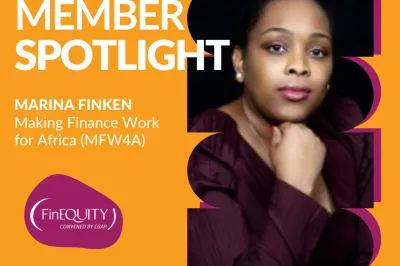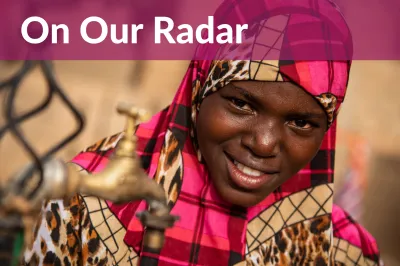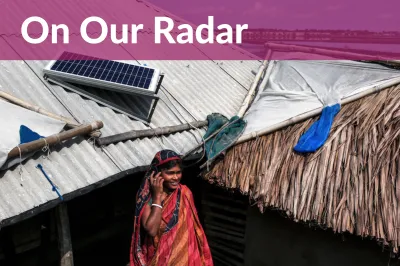What Does it Take to Become a Gender-Inclusive Organization?

This blog is part of FinEquity's collaboration with USAID on creating resources around gender-balanced workforce, conducting gender analyses and designing women-focused products.
Inclusive and relevant financial services are critical to enabling women to build personal and familial financial security and prosperity, and ultimately contribute to women’s economic empowerment.
In order to serve women well, financial service providers need more women represented internally at all levels, and especially at the decision-making table.
Financial institutions especially can benefit from greater gender equality in their workforce and leadership ranks, as banks with women leaders have superior financial performance and are more stable and resilient during financial crises. In addition, when more women provide input and make decisions about markets and product development within financial institutions, all levels of the organization are more likely to be aware of women as an underserved market.
Despite these facts, the financial services sector continues to be a male-dominated space., but at the current pace of change it will take 135 years to do so. Simply put, we cannot wait that long!
So, how can we tackle this seemingly insurmountable task? In this blog, we share key strategies developed by three FinEquity members and their lessons learned through supporting financial service providers to develop gender-inclusive workplaces.
Conducting an organizational gender assessment is an essential starting point on the journey towards building strong, gender-diverse teams.
A great example is Women’s World Banking’s gender assessment methodology, developed from their 40 years of experience supporting financial service providers. The assessment measures an institution’s current state in regard to internal gender diversity. Through a quantitative analysis of staff statistics and performance data, review of institutional policy documents, and qualitative interviews with a cross-section of staff from customer-facing roles to managers, leaders and the board, the process identifies critical gaps and opportunities and results in a tailored gender action plan with concrete steps and key performance indicators (KPIs).
One key insight from Women’s World Banking’s assessments across contexts, cultures and institutions is that deeply held beliefs within institutions pose the greatest challenge to their ability to make progress towards gender inclusivity. Staff sentiments like“Women face safety issues in the field and need protection,” or “ Women do not work (or do not want to work) in finance,” or “ Men can dedicate more time and be more productive,” are examples of beliefs that get in the way of hiring, promoting, developing and retaining women. However, women’s lived experiences provide a counterpoint to these biases.
For example, staff retention data from Women’s World Banking’s partners reveals that women are often amongst the most loyal staff. The assessment process holds up a mirror, allowing senior management a glimpse into how their staff truly experience the workplace, and separates structural barriers to equity and inclusion from perceived ones, understanding that both may be equally challenging to tackle.
This is why to be able to effect change externally we need to tackle gender perspectives within financial service providers and build their internal capacity to become more gender-inclusive.
Opportunity International’s Roots of Change program developed bespoke gender capacity building training for partner organizations and appointed gender focal point staff at the board and branch levels to help lead organizational change. Trainings covered topics such as gender terms and concepts and how they apply to life and work for customers and staff, conducting gender analysis and assessments, and best practice tools tailored for the financial inclusion sector. These tools showcase the business case for having a gender-inclusive workforce, especially at the senior management and governance levels. Creating awareness about the business case of a gender-inclusive workforce with financial service providers and providing a common language around gender inclusion is an important first step, as underlying gender norms limit opportunities for women customers and shape the behavior of FSP staff.
Opportunity International also developed a gender dashboard to track progress on key gender indicators such as the number of women working at different levels within partner institutions. Tracking progress on these indicators helped organizations identify that while they were making good progress on the number of women working at core management levels, there were much fewer women at leadership and board levels. A deeper analysis revealed that career transitions at higher levels were much slower, making it difficult to change the gender composition of boards and leadership teams.
This realization prompted organizations to develop mentorship programs for women to support them in applying and taking up leadership roles. Findings from a 2021 gender assessment suggest that these mentorship programs are paying off as partner organizations, particularly in Ghana, have deepened their gender commitment by adopting a gender-inclusive policy, increasing women’s representation at the board-level and having women as part of the C-Suite/senior management. Sinapi Aba Savings and Loans Ltd (a partner organization in Ghana), has changed gears to focus on gender not only in their portfolio and marketing approach, but also when it comes to staff and internal change management.
Staff engagement surveys are another powerful tool to help organizations identify opportunities to improve their gender mainstreaming.
Pamecas, a microfinance institution in Senegal and member of the World Council of Credit Unions, administered a staff engagement survey to help reveal how staff experience gender within their organization. The survey included 23 statements such as, “My organization treats men and women equally; I understand that women may have different financial needs than men,” and asked participants to indicate how strongly they agreed with those statements. Survey findings prompted a renewed commitment to gender equity throughout the organization.
For instance, the head of Human Resources is using the results to better align the composition of its workforce to its clients, and staff shared their desire to contribute to improving gender in the institution by having open spaces and forums where they can share their ideas. The company was restructured and added a Managing Director for Administration, a Savings department and a Sales and Technology department. Pamecas is also preparing the organization for a generational shift that will happen with a large cohort retiring in the coming years.
From a process perspective, administering the survey also revealed that when leadership encouraged all staff to answer, there were higher response rates. Employees need an anonymous way to provide their feedback. The survey also gave Human Resources a tool to better understand staff aspirations - especially female staff - and their perceptions of their career opportunities.
I have run this survey in different iterations seven times with different financial institutions in sub-Saharan Africa and every time, the Human Resources team sees the value in running the survey regularly.
So, where do we go from here?
Given the devastating effects of the COVID-19 pandemic on women, . Demonstration cases, tools and insights – such as the ones shared in this blog – can guide financial institutions who are looking to make the pivot to more gender-inclusive business models. With such changes, financial institutions will be better equipped to cater more effectively to women’s needs and challenges.
Do you have an approach, tool or insight you know works for improving gender balance in the financial services sector? We want to know about it! Stay tuned for a FinEquity survey in which you can share your findings.


